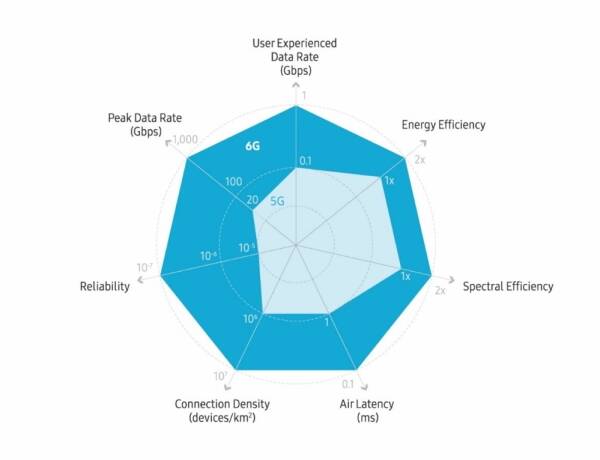Context:
Recently, Prime Minister launched the country’s first 5G testbed to help industry validate its products locally, he also set a target for India to roll out 6G services by the end of this decade.
Relevance:
GS III- Science and Technology
Dimensions of the Article:
- India’s 5G Testbed & 6G Goal
- From 1G to 5G
- The Future Gs
India’s 5G Testbed & 6G Goal
- It will allow start-ups and industry players to test their products and make them 5G ready.
- Till now, this test was only possible abroad.
- The testbed is a collaborative project involving eight institutions led by IIT-Madras.
- At the launch, Modi said that India planned to roll out 6G by 2030, and a taskforce was working in that direction.
From 1G to 5G
1G to 2G: The Big Jump
- Launched in the late 1970s in Japan, 1G was the first generation of mobile telecommunication technology that offered voice calls only.
- But it came with low sound quality, low coverage, and without any roaming support.
- The major leap for telecom tech of that time came in 1991 with the introduction of 2G.
- The analog signals of 1G became completely digital in the second generation.
- It allowed users to roam and offered small data services like SMS and MMS at a maximum speed of around 50 kbps.
- While the focus was still on voice calling, data support was introduced.
- 2G continues to be popular in India even as it is being gradually phased out in many parts of the world.
- Jio, a major service provider in the country, last year set itself a goal of ‘2G-mukt Bharat’ — to “free 300 million subscribers still trapped in the 2G era”.
The 3G Revolution
- Mobile technology kept its date with generational leap every decade with the introduction of 3G services in 2001.
- It promised four times faster data transmission with access to mobile Internet.
- This is the generation that brought emails, navigational maps, video calling, web browsing and music to mobile phones.
- It was also during this generation that BlackBerry phones became the rage, and subsequently, Steve Jobs introduced the world to the ‘App Store’ with the launch of iPhone 3G in 2008.
The World in 4G
- High speed, high quality, high capacity voice and data services – that’s the promise that 4G, the network most of us use today, brought with it around 2010.
- Standard 4G came with five to seven times faster speeds than 3G.
- Compared to 3G, a phone on a 4G network got quicker response to its requests (lower latency).
- This is what made our phones more like hand-held computing devices.
The 5G Promise
- Hailed as the new frontier of mobile technology, 5G promises latency (the delay users face as data make a round trip) of just one millisecond compared to 50 milliseconds of a 4G network.
- The devices, according to the MIT Technology Review, will have low power requirement that will boost the battery life of devices multiple times.
- But 5G is expected to be more than just faster download speeds.
- With increase in cellular bandwidth, blazing speed and low latency, it promises to boost the ‘Internet of Things’ by making it easy for several devices to connect to each other to communicate and to be controlled remotely.
- A 5G world of the future is billed to have smart city infrastructure, self-driving cars, and robotic surgeries as real-use cases.
- 5G is being rolled out in many places including South Korea, the United States, and Canada, and is expected in India soon.
- Also, the technological force of this next generation has already made major world powers face off in the race to get an edge.

The Future Gs
- Not a functioning technology as of now, 6G only promises to do better what 5G should.
- But then, the ‘future Gs’ will not be just about your phone.
- Experts envision a communication web with zero lag, where it will be possible to seamlessly perform remote surgery and even beam sports events live using hologram technology.
- Both humans and machines will be the main users of 6G, and 6G will be characterised by provision of advanced services such as truly immersive extended reality (XR), high-fidelity mobile hologram and digital replica.
-Source: Indian Express



